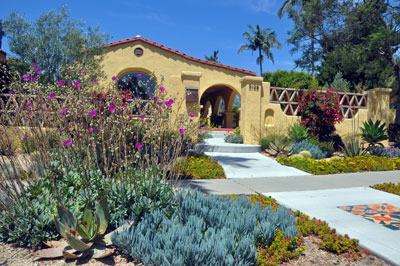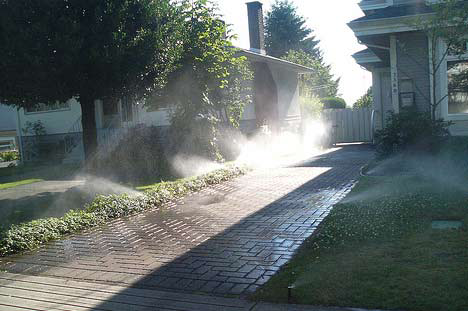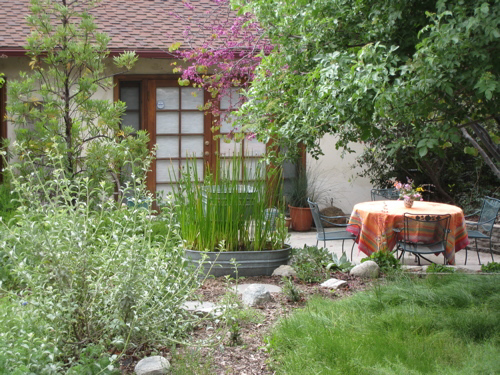Drought-Tolerant Landscaping is Part of the Solution to California’s Water Woes, and so is Population Stabilization
Published on November 14th, 2014
Xeriscaping is landscaping with drought-tolerant, preferably native plants. In recent decades, its popularity has grown in the American Southwest as acute water shortages have become chronic water shortages…and as residents have sought to live in greater harmony with nature in what writer Mary Hunter Austin (1868-1934) famously called (in the title of her 1903 book) The Land of Little Rain.
 |
| Xeriscaping can be beautiful… and appropriate to California’s dry climate. |
Xeriscaping uses hardy plants that need little or no irrigation once established.
California homeowners and landscapers can go even greener by selecting native plant species, which gives them a “two-fer,” minimizing water waste while promoting native flora and the native fauna they attract, such as butterflies and hummingbirds. Native plants already are adapted to Southern California’s arid climate; they wouldn’t still be here if they hadn’t survived the ages without any outside assistance.
 |
| A no-no in the new age: sprinkler systems wasting water |
Drought-tolerant plants include the likes of rosemary, lavender, sage, thyme and even some roses. Within a year or two of their establishment, they don’t need to be irrigated at all, except in severe droughts or heat waves. By using the correct variety of grasses, even lawns can be made more drought resistant.
A recent article in the Huffington Post by Lisa Novick of the Theodore Payne Foundation for Wild Flowers and Native Plants urges Angelenos and California nurseries to use native plants as they set about xeriscaping the city environs. Born in England, Theodore Payne moved to California in 1893 and eventually became the head gardener at the ranch of Shakespearean actress and Polish patriot Madame Helena Modjeska in Santiago Canyon in Orange County.
Novick reminds readers that California is in “drought and extinction crises of historic proportions.” She charges the ornamental horticulture industry (OHI) with mass producing and promoting “ornamental non-native plants that feed neither people nor wildlife.” As a wildlife biologist, I can attest that in general it is true that the birds, insects and other wildlife native to a region are not able to eat non-native, invasive species of plants with which they did not evolve over the eons.
 |
| Drought-tolerant native plant garden in Southern California |
Novick urges consumers and local governments to support native plant nurseries and the “earth-friendly” jobs they spur in propagation, design, sales and maintenance. She writes:
…they reduce water and energy usage, support biodiversity, and revitalize ecosystems in urban and suburban areas – the place most people live. The drought-tolerant non-native plants peddled by the OHI are a cosmetic veneer that does no lasting good.
Xeriscaping with native plants is one of the many strategies Californians can utilize to conserve water and biodiversity in a dry climate, one that is likely to dry out even more in the years ahead.
Even as we promote these laudable measures, we must not lose sight of the fact that a perpetually growing population of water consumers in California will inevitably erase any water savings that techno-fixes and water conservation may yield.
As the saying goes, “No matter what your cause, it is a lost cause without population stabilization.”




